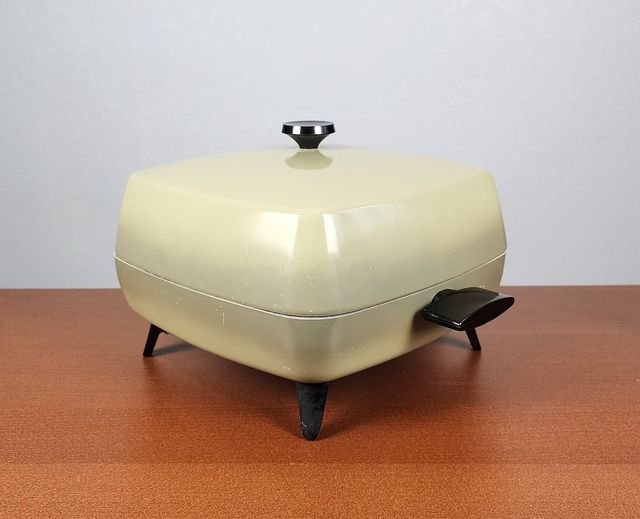The vintage nonstick electric skillet, a staple in mid-20th century kitchens, represents a significant evolution in culinary technology. These skillets not only revolutionized cooking methods but also introduced a new level of convenience and efficiency to everyday meal preparation.
History of Nonstick Electric Skillets
Early Innovations in Electric Cookware
Electric cooking appliances began gaining popularity in the early 20th century. The electric skillet emerged as a versatile tool, combining the convenience of electric heating with the familiarity of a traditional skillet. Early models were made of cast iron or aluminum and were manually controlled.
Introduction of Nonstick Surfaces
The 1950s saw the introduction of nonstick coatings, most notably Teflon. This innovation drastically reduced the need for cooking oils and made cleaning much easier. Electric skillets quickly adopted this technology, offering home cooks a more efficient and user-friendly option. By the 1960s and 1970s, nonstick electric skillets had become a common fixture in American households.
Usage of Nonstick Electric Skillets
Everyday Cooking
Vintage nonstick electric skillets were incredibly versatile, suitable for frying, sautéing, simmering, and even baking. Their adjustable temperature controls allowed precise cooking, making them ideal for a wide range of recipes. From breakfast pancakes to dinner stir-fries, these skillets handled it all with ease.
Entertaining and Buffet Serving
The electric skillet’s portability and consistent heating made it perfect for buffet-style serving at parties and family gatherings. Many models came with detachable cords, making them easy to transport and use directly on the dining table, keeping food warm throughout the meal.
Healthier Cooking
ADVERTISEMENT
